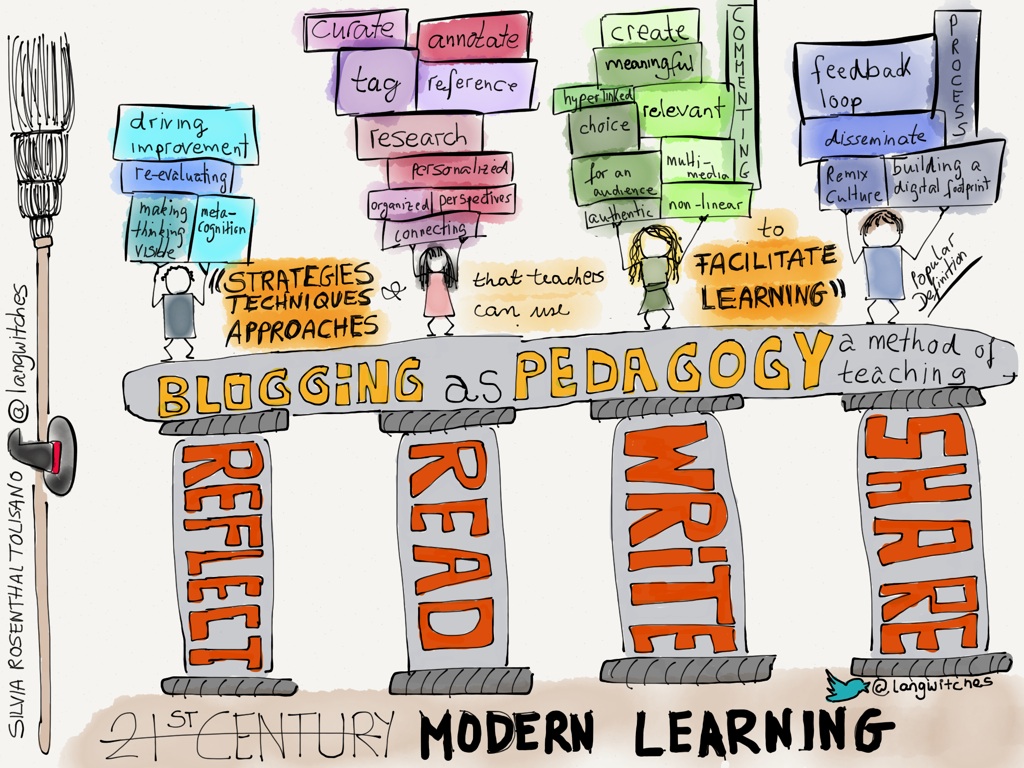Blogging as Pedagogy: Facilitate Learning

Blogging should not be an add-on, not an isolated project, but should be seen as PEDAGOGY.
Ann Davis shared a definition of Pedagogy beyond a simple “method of teaching” (unfortunately I was not able to find a source of the definition… it seems to be floating around in so many spaces without a common attribution or source.)
The strategies, techniques, and approaches that teachers can use to facilitate learning.
Blogging can support the strategies, techniques and approaches to facilitate the learning in your classroom no matter what grade level, age group and subject area. Blogging supports four primary areas:
- Reading
- Writing
- Reflecting
- Sharing
In each one of these areas, blogging can be a strategy to facilitate learning
- Reading
- in digital spaces support students’ skills in our increasingly digital reading environment
- becomes a personalized content experience versus one size fits all approach
- turns into a collaborative and connected experience
- in digital spaces supports organization via archiving, categorizing and tagging of information
- blogs is the start that continues to deepen with writing on blogging platforms
- is part of research with non- linear platforms
- is an essential component of content curation
- supports content annotation which links to future writing
- Writing
- is about more than text (how do we communicate in a variety of media forms?)
- gives students choices to communicate ideas in different media platforms
- on a blog is writing for an audience
- is about a conversation through commenting
- becomes multi-layered and non-linear by using hyperlinks to connect ideas, concepts and resources
- in digital spaces give students skills for our increasingly digital world
- Reflecting
- can’t be just for reflection sake, but needs to drive improvement
- is the basis of re-evaluating your teaching and practices
- techniques can be supported by Making Thinking Visible Routines
- is part of a meta-cognitive (thinking about your thinking) process
- Sharing
- is part of the feedback loop
- is an integral part of the process of learning
- is how you disseminate your students’ work to a global audience
- as a technique of building and maintaining a digital footprint
- is the foundation of a remix culture
How are you using blogging as a strategy, a technique and an approach to facilitate learning? Let’s make it visible for others contemplating blogging with their students?
cross posted at langwitches.org/blog
Tech & Learning Newsletter
Tools and ideas to transform education. Sign up below.
Silvia Tolisano is a Curriculum21 faculty member, author of the book Digital Storytelling Tools for Educators and founder of the Around the World with 80 Schools project. Read more at http://langwitches.org/blog.
